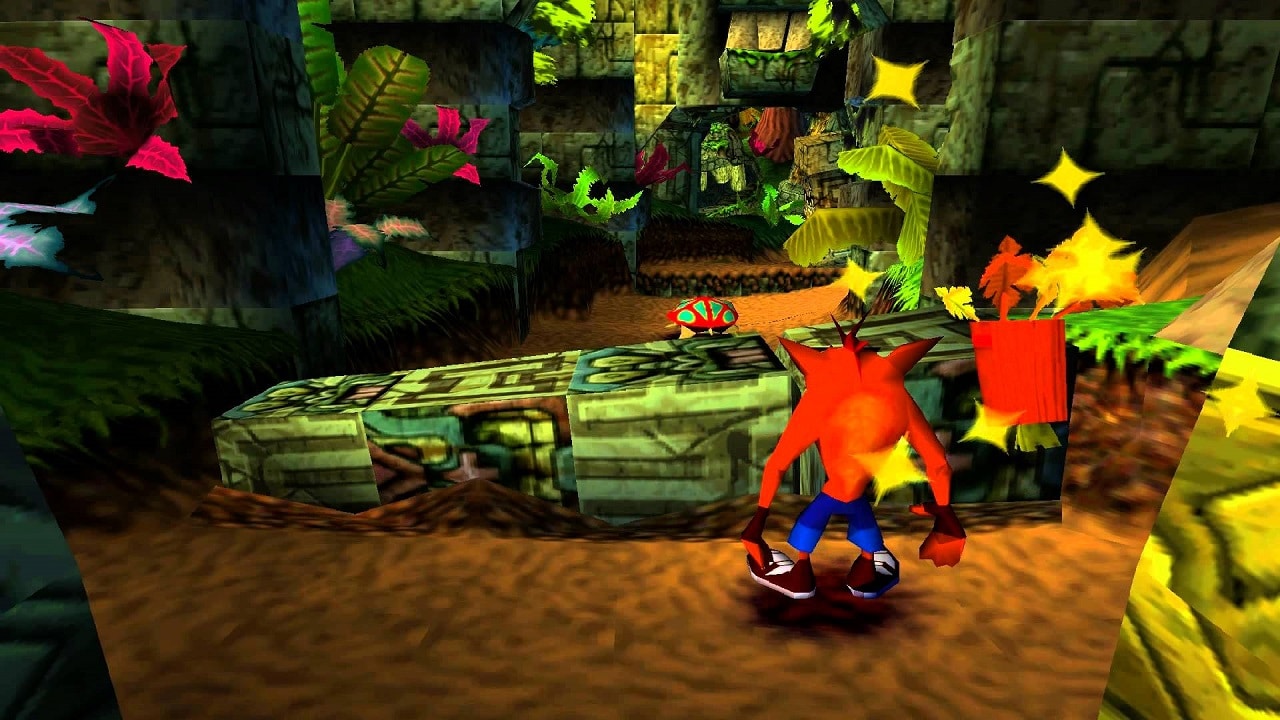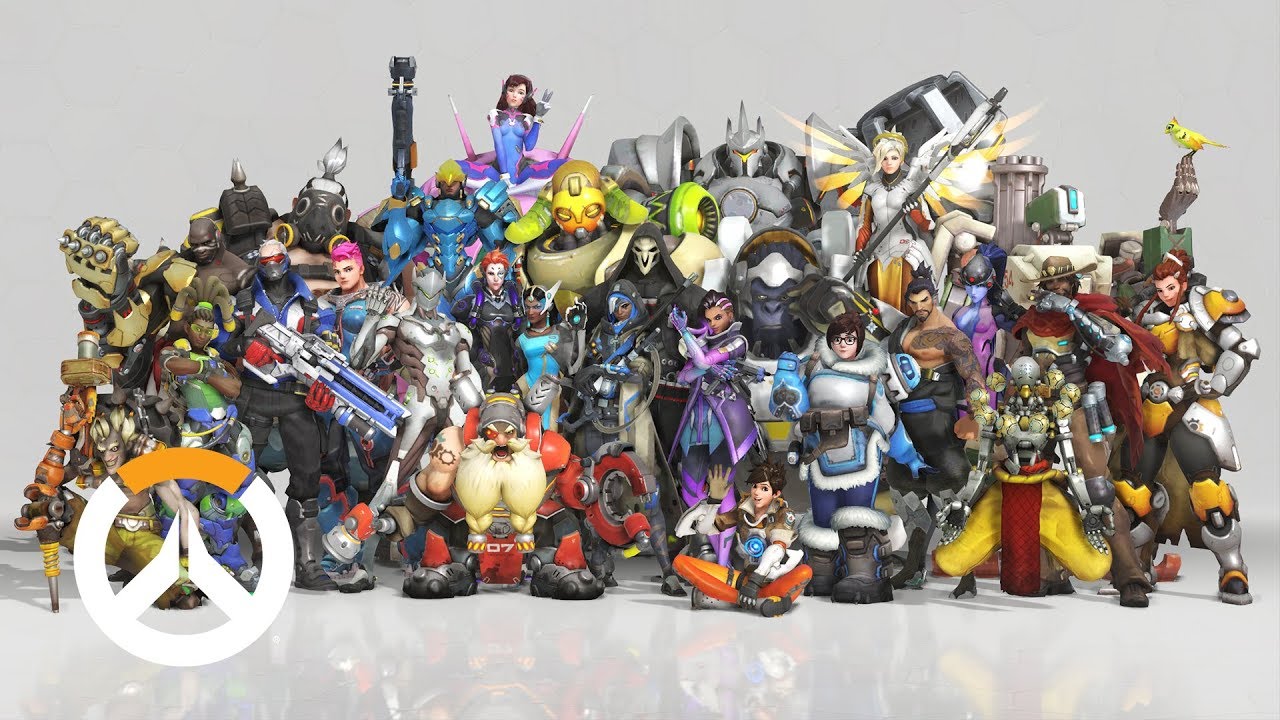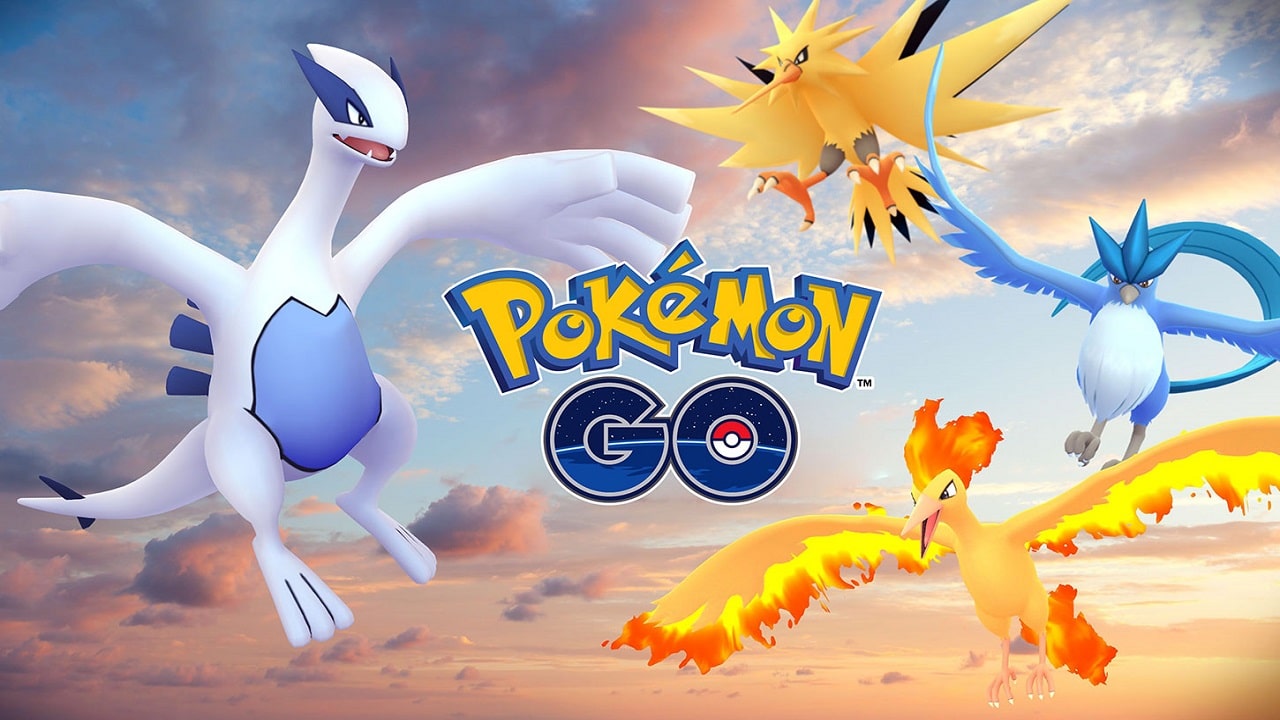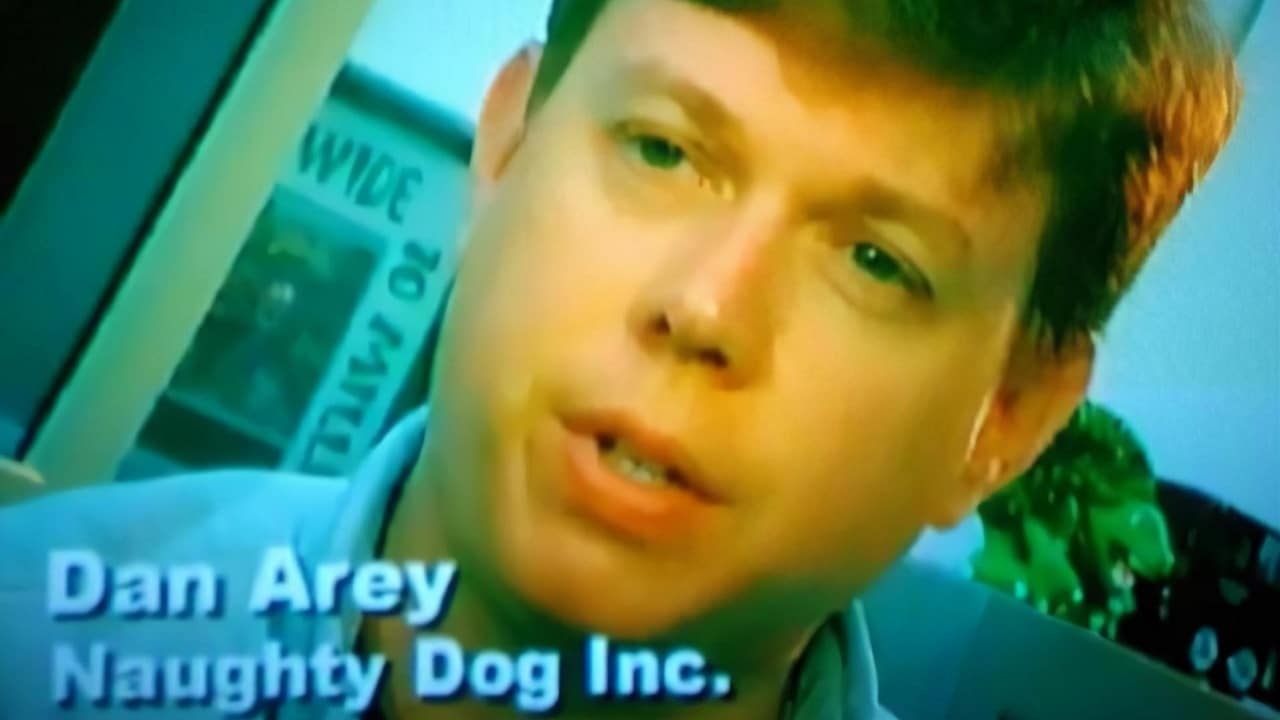From Naughty Dog to Pokémon Go, E. Daniel Arey has had a front row seat to some of gaming's greatest successes. His career started ordinarily enough. Raised in Sacramento, California, Arey got into programming in high school and learned the basics of game design playing Dungeons & Dragons. A few years later, he landed his first industry job in the QA department at Electronic Arts. “I think it was less than 120 people when I joined. Trip Hawkins was still there,” Arey says. “I was starstruck.”
Arey quickly climbed through the ranks to the position of lead tester, and relished the chance to provide more substantial feedback. Chuck Yeager’s Flight Simulator was the first game where he took charge of the QA and, soon enough, he was hanging out with the development teams, suggesting ideas for games like Skate or Die. “And at that point, I knew what I wanted to do in my life.”
But to move up further, Arey needed a change of environment. Next stop: Crystal Dynamics. Here Arey would cross paths with two people destined to make a mark on his career. The first was the studio’s chief technical officer and the man who would later become the architect of PlayStation 4, Mark Cerny. “He was my mentor and started teaching me a lot of game design,” Arey says. The second was an industry rookie who would go on to lead one of gaming’s most revered studios. “I hired Evan Wells, who at the time was just a young kid out of Stanford and now is president of Naughty Dog.”
In his seven years at Crystal Dynamics, Arey not only built important relationships, but worked on such games as 3DO’s launch title Crash N Burn, an Egyptian-themed adventure Total Eclipse and the original 2D Gex. He moved up to the position of director of game design, before it was time to move on once again. About six months after Mark Cerny departed Crystal Dynamics to join Universal Interactive Studios, he called on Arey to join him and work on a platform game being developed at a new studio: the game was Crash Bandicoot and the place was Naughty Dog. Arey didn’t know it then, but the decision to follow Cerny set the path for the next decade of his life.
The Three Cs

“We created a cool kabbalah of game design. We were thinking differently about game design. We were all students of Shigeru Miyamoto, of his style and approach to game design and game development,” Arey says about Naughty Dog at the time. I ask for an example and Arey suggests how Miyamoto would design an enemy encounter. Think of the various enemy encounters in Mario games: you deal with a Koopa Troopa by flipping it over and rushing in to finish it off, but a Bob-omb requires the opposite approach. “Every single enemy elicits a different player response and that’s why there is so much flavor and texture.”
The Crash Bandicoot trilogy that Arey helped design tried to incorporate lessons like this, but in other areas Naughty Dog wanted to take Nintendo's example much further forward. Case in point: Crash Team Racing.
“Crash Team Racing was just taking what we believed to be the best racing game ever – Mario Kart – and trying to build off from that brilliance,” Arey says. As humble as he is about it, there's a good argument that CTR actually managed to improve on Nintendo’s flagship racer. That may be because he's a designer capable of finding inspiration in unlikely places.
“I was watching [American] football and they were talking about hang time. Hang time is when they kick the ball up in the air and how long it hangs up there,” Arey recalls. “I thought ‘wouldn’t it be cool if you had to get a big jump to get a boost, and the longer the hang time, the bigger the boost?’” The answer is yes, it would be cool, as anyone who's ever played CTR can confirm. Still, a good idea is just the beginning of a long road to a great game.
“You could never blame the game. I need to always know it’s my choice and my fault when I die. And I’m okay because I'm gonna get back in the game immediately,” Arey says about one of the Naughty Dog principles. To make sure that no player could ever blame the developers, a simple mantra was enforced: “Character, camera and controls were the 'Three Cs' that were the most important things at Naughty Dog.”
The Three Cs are intertwined. For example, responsive controls mean nothing without the on-screen character reacting accordingly and without a camera providing the best view of the situation. Hitting the sweet spot of all three working in unison was (and still is) no easy task. But Naughty Dog had a secret weapon: extensive testing.
“Mark Cerny pushed us to develop a strong testing system. I learned this early with him, and I continued it my whole career. It's all about rapid prototyping. You can't sit there and theorise about a game idea and whether it’s gonna be fun or not. You’ve gotta get it up and running as quickly as possible.” And don’t forget, Arey adds, to keep on tweaking it. “Constant iterations to get the best feel, the best play, the most fun.”
With a good prototype in hand, the studio would start testing the game with outsiders, doing anything to get the kind of unvarnished feedback it wanted.
“We literally put people in a room and we put cameras on them. Sometimes we would even misrepresent ourselves and say ‘we're not the game developers, you can tell us the truth,’” Arey says. “Sometimes when people talk to the developer they’re going to be nice because they want the pizza and they want to play more games. So we'd say ‘we don't know if this is fun, you can tell us the truth and we won’t tell anyone.’ We got honest feedback.”
Still, the cameras were there for a reason.
“More importantly we'd put cameras on their hands and their faces. Because they could say they had a great time but if we’re watching them and they’re bored and they’re looking around at other people, we can tell by their body language that they were bored.” And the attention didn’t end there. “We kept track of exactly where they had died across the entire game and we could adjust the game accordingly. We used testers as a really great way to smooth out gameplay and find brick walls where people were having trouble.” Even, or perhaps especially then, if they didn’t know they were having trouble.
Naughty by nature

After three platformers and a racing game, Naughty Dog needed a break from the world of Crash Bandicoot. With the launch of PlayStation 2 came an opportunity to start a new franchise with Jak & Daxter: The Precursor Legacy. Arey and Even Wells, by that time an important member of the team, co-designed the game, with the former also writing its story and handling the voice direction.
“One of our first goals was to use narrative as a reward,” Arey says. Instead of coming up with a flimsy excuse to make players chase orbs, the team opted for a well-paced tale that rewarded progress with high-quality cutscenes. “Sometimes they were funny, sometimes they were moving, but they always told you more about the story and the characters.”
And with the new hardware came new possibilities. “Thanks to PS2 we were able to do the type of stuff that's never been done before in terms of lighting and vistas,” Arey says. The audience noticed the graphical marvels: Arey fondly recalls instances of gamers recanting stories of taking the time to slow down and watch an in-game sunset in Jak & Daxter. “Those were our goals and we were so happy to see people doing that.”
If that wasn’t enough, the next two games in the series went even further. Jak 2 introduced an entire city to explore (“We really pushed the limits of PlayStation 2.”) and Jak 3 threw cars into the mix before Jak X Combat Racing focused entirely on racing. If you notice a pattern there, you’re on the right track. Arey confirms my suspicions: “The Naughty Dog style was to do three games, do a racing game, and then do something new.”
Naughty Dog’s next game, Uncharted: Drake’s Fortune, was Arey’s last at the studio after ten years of service that earned him the title of creative director. It’s perhaps befitting that his last hurrah was the game that ushered the company into a new, photorealistic, and relatively grounded era.
Discovery and mystery
“There were a lot of emotions,” Arey says about his time at Naughty Dog. It’s hard to sum up a decade of one’s professional life into a sound bite, but I ask whether he can nonetheless.
There was pride, and thankfulness: “We were proud of what we had done and Sony took care of us. They were very good to us, they didn’t mess with success.”
There was fear: “It was also a scary time because we’ve had success and with that comes the pressure for more success. There wasn’t a single game at Naughty Dog that we didn’t start thinking ‘oh my god, this is gonna be our first failure.’”
There was exhaustion: “Naughty Dog was a hard-working group. People would sleep under their desk, they were just so committed. In the early days, it was 70-80 hour weeks. It was intense.”
Then there were great expectations: “There were a couple of times when Sony expected us to sell hardware, especially with new platform releases. We’d be part of the features and we’d be in commercials, which I loved, but once you have a commercial out, you’re committed to your release date. You’ve gotta get the game done. And getting the game done at the highest standard of Naughty Dog is hard to do.”
Nothing was left on the table. “We were well rewarded for our success. I have no regrets.”
I ask Arey for his favorite memories.
“We called it ‘button chair game design’. It’s when a game designer sits on a chair next to the programmer and they just work on the mechanic until it’s perfect... late nights, until three in the morning, sitting there with Andy Gavin working on the controls for Jak.”
I shift the gears a little bit to ask Arey about the common thread between all his games.
“It’s always about discovery, always about the mystery. I love the idea that people are trying to figure something out. You thought you knew the history of this place, but there’s something secret going on behind it. That what Uncharted was all about. I love taking real history and wrapping something new around it and asking ‘what if?’”
Visions of the future

The first reason Arey gives for leaving Naughty Dog is the grueling commute. “I'm in Orange County, which is about 45-50 miles from Santa Monica where Naughty Dog is.” But, of course, there’s a little more to it.
“I’ve done consoles for 17-18 years at that point, but I’d never done PC. So I was really interested in PC,” Arey says. That interest in PC gaming and a convenient location in Orange County came together in Blizzard. “I joined Chris Metzen and Rob Pardo working on this new game called Project Titan to develop the world of what eventually became Overwatch.”
“There were big hiccups in the project. It was a gigantic project. It was a bigger World of Warcraft type of experience that was being developed at the time,” Arey says. While the scope of the game changed to the smaller-scale arena shooter that we've grown to love, some of the original world development survived the shift.
Arey remembers early brainstorming sessions, where Metzen and Pardo originated the idea to ditch the dystopian visions of the future so prevalent in video games. “What if we solved some of the world’s biggest problems?” He mentions the visions of the world with unlimited energy and futuristic, culturally appropriate skyscrapers rising in cities like Cairo. “It was these beautiful visions of the future where Overwatch started.” And so did the name Overwatch, as a matter of fact. “We used the word overwatch for the computer system that was watching over the world.”
But Project Titan in that initial form wasn’t to last. And Arey understands why. “I knew it needed to be curbed down and I’m glad that they did it. Credit to Blizzard. They’re always very careful. They’re not afraid to really revamp something that’s not working. They’re willing to kill games. They've killed like 9 or 11 games you guys never heard of. Those guys are totally okay with not releasing something that isn’t good. And that I respect.”
That said, Arey is happy Blizzard kept faith in Overwatch.
“Luckily they didn’t cancel it, but just pared it down and released an amazing game.”
A scary place

The next big step in E. Daniel Arey’s career happened thanks to a Google executive called John Hanke. Hanke was behind Google Maps and Google Earth, and he had a vision of using all the data from the company’s mapping products to make a video game.
“I was very intrigued. I’ve done console, I’ve done PC for a couple of years but, wow, turning the whole world into a game?” Arey couldn’t say no. And thus the next three years of his life were spent at Niantic Labs incubating a location-based, augmented reality game called Ingress. “I was working on all types of different mechanics of using the mobile devices to get out into the real world and get people discovering, exploring, walking and having a great time meeting others.”
And in the process, Arey ran up against a problem few game designers have faced before.
“Before we released Ingress, we were wringing our hands. We had to be careful about security, privacy, safety. Would people want to meet each other in public? Post-9/11 the world had become a bit of a scary place. And we were not sure if people would want to meet each other.”
Niantic worried in vain. Ingress got people out of their houses, into the streets in search of imaginary portals, and it wasn’t long before the game found a big, devoted fan base. “People were getting Ingress tattoos, we were getting Ingress weddings, Ingress babies. It was a dizzying experience,” Arey recalls. “Turns out people just want an icebreaker and they want a reason to talk to each other and share something.”
One of the places where Ingress got immensely popular happened to be Japan. The word of its success reached the folks at Nintendo, and they wanted in on the fun. Not long after, Nintendo contacted Niantic with an offer it couldn’t refuse.
“We had tens of thousands of photos taken around the world that we've built into a huge database, our geostore of locations that are curated, safe, very interesting places and that became the basis for Pokémon Go.” And while turning the planet into a Pokémon theme park is by no means an easy task, it wasn’t the hardest part of the job.
“Pokémon games, for all of their success, got a little complicated. And the card game is complex too,” Arey says. “Our big battle was to keep the core of what made Pokémon, without losing all the things that people loved the most, but also to pare it down it to simple choices where everyone could play it.”
That, of course, took a lot of work. One of the key mechanics that could make or break the game was the act of catching of a Pokémon.
“There's a lot of choices you're making like the choice of a PokéBall or using a certain berry. You have distance, you have aiming, you have curve balls, you have the Pokémon moving around. There's actually a lot of complexity, if you want to dive into it, but the secret of Pokémon Go is that if you just tap it with your thumb without even looking that’s okay too.”
Was anyone at Niantic expecting Pokémon Go to do as well as it did?
“We had no idea what we had,” Arey says. “We knew we had a good game, but I was honestly saying that if we get 20 million downloads I’ll be a happy man.” The most recent official figures from May 2018 are that Pokémon Go has been downloaded 800 million times.
Arey’s take on the phenomenon? “The world has become sort of a scary place, and all of a sudden you have this fun, happy game, and everybody is playing it and meeting people and giving them a chance. The world wasn’t quite as scary anymore. We all needed something to remind us that people are good.”
And if uniting the world over a mobile game wasn’t ambitious enough, Arey has a couple more lofty goals on his mind.
I have a dream
“I want to go to the Lincoln Memorial and recreate Martin Luther King’s 'I have a dream' speech, where you can walk around the crowd as he’s giving it,” Arey says. Sounds like science fiction? He begs to differ. “The technology is not as far away as you think. We're starting to get to where you can put a thing in a space and if you light it correctly, it feels like it’s there. We’re getting closer and closer to a real holodeck.”
Arey likes to call this idea of bringing a historic scene to life and letting us walk through it circumambience. “I think that you can turn history into a game at a level that the kids can learn and understand. And it is true of any kind of education. Working in anthropology, you can imagine going to a dig site and bringing that village to life and walking around in it.” As the current director of game design and creative development at Niantic, Arey appears to be in a perfect position to pursue this dream, though it's far from the only dream he has.
These days Arey spends some of his time teaching a course at the University of Southern California Viterbi School of Engineering with the hopes of finding the next Portal, a genius game built around a breakthrough mechanic that won’t cost tens of millions of dollars to develop. And while he won’t rule out a return to the traditional AAA game making, he’s in love with the idea of a crossover between mobile and console experiences.
That's the thing with Arey: it's always on to the next project, the new technology, the different platform. That's why you look back over this incredible career, and wonder if he's only getting started.
 Thalidomide Vintage Ad Shirt $22.14 |
 |
 Thalidomide Vintage Ad Shirt $22.14 |
